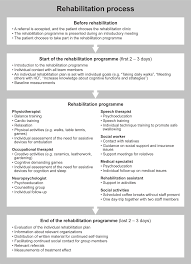
When applying for rehabilitation, the immigration officer will review the supporting documents and your application. He or she will then make a positive or negative recommendation. If the application is positive, the immigration officer will forward it to the authority. The authority is usually the manager of the local office. However, for more serious offences, the decision is made by the Minister of Immigration, Refugees, and Citizenship. The entire process can take several months or even a year, and you will be informed in writing of the outcome.
Cost of inpatient rehab
The cost of inpatient rehabilitation for individuals varies depending on many factors. Some of these factors include the location of the treatment facility and insurance coverage. While this type of treatment is expensive up front, it can save a person a considerable amount of money in the long run. One study has found that for every dollar spent on SUD treatment, an individual will save an average of $12 in health care costs and criminal justice costs. There are many other factors to consider, such as quality of service and the length of treatment.
Inpatient rehabilitation is often covered by private health insurance. In some cases, a private insurance policy may cover up to 50% of the total cost. However, in many cases, the cost of rehab will be higher than this. The best option is to choose a program that accepts insurance or has affordable payment plans.
Although inpatient rehab is rarely free, it is not impossible for individuals to receive treatment for addiction. However, it is important to note that the cost of treatment can quickly add up. Some people may be eligible for low-cost inpatient rehab through state-funded programs. Other facilities may offer sliding-scale fees based on affordability. Often, the financial assessment is conducted as part of the admissions process. Many states also have free rehab programs for low-income individuals.
The average cost of inpatient rehabilitation for individuals depends on the type of treatment and the length of stay. For instance, a 12-week alcohol rehabilitation program may cost between $42,000 and $54,600. This figure does not include costs for stroke or joint replacements, which require longer stays.
Cost of post-employment services
Post-employment services provide a variety of supports for individuals to maintain and advance in their employment. These services are based on a person’s unique resources and strengths and can be customized according to a person’s specific interests and concerns. Individuals receive a variety of benefits ranging from mental health and counseling services to assistive technology.
In addition to employment services, these programs provide training for new job seekers. Training programs include vocational and post-secondary education, job search skills development, and assistive technology. Individuals may also receive counseling and personal assistance during the course of their VR services. Other services may include treatment, such as occupational therapy or vocational therapy, to enhance their employment opportunities.
Social Security pays for individual rehabilitation fees
Social Security pays for individual rehabilitation services in a number of ways. For example, it offers payments to state VR agencies when a beneficiary regains employment or meets other criteria. It also has a program known as Ticket to Work (TTW) that reimburses state VR agencies for services rendered to SSI recipients.
The Ticket to Work program helps SSI recipients gain economic independence. The Social Security Trust Fund and the State VR agencies compensate ENs based on the percentage of benefits that are saved by the beneficiary through work. Generally, the amount of savings is based on the beneficiary’s earnings and reduced or eliminated cash benefits.
